
In 1990, Universal finally opened its theme park in Disney’s backyard, and it was stocked with thrilling, “creature feature” rides that matched Disney’s excellence. From Jaws to Back to the Future: The Ride and especially Kongfrontation, Universal’s movie-making wizardry had translated to a pretty impressive park.
But even by the end of the decade, Universal Studios Florida was beginning to change. Inherent in the “studio” park model, stocking a park with hot box office blockbusters and generation-defining films is great… until a new generation arises. By the dawn of New Millennium, Universal’s park and its ride lineup dedicated to films of the ’70s and ’80s was looking less and less relevant to young thrillseekers.
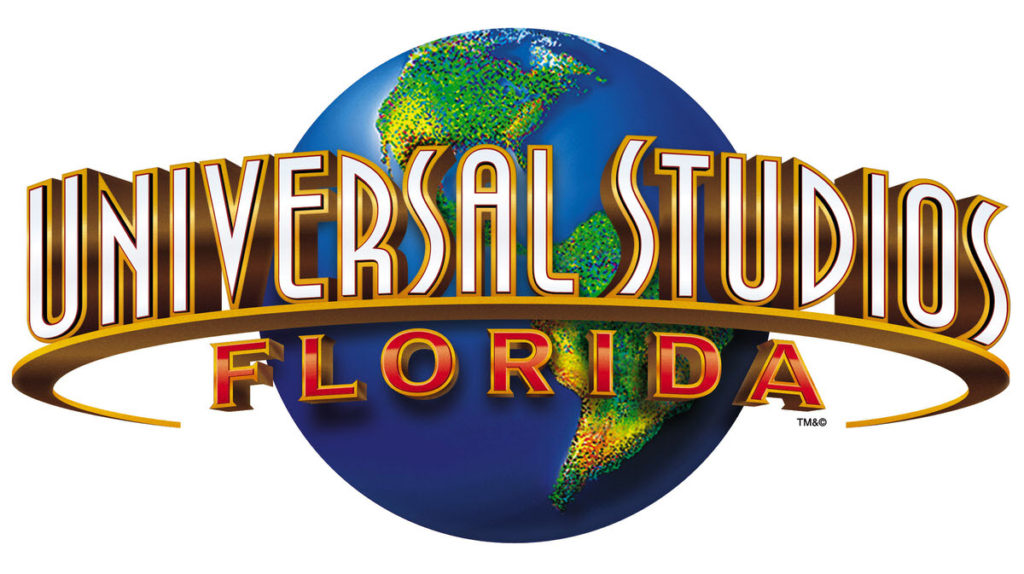
Further spurred on by the timelessness of 1999’s Islands of Adventure park, Universal executives got serious about keeping the original Studios park had to date. A new generation of films needed a place in the parks, and in Universal’s quest to keep its offerings fresh, no ride – no matter how beloved – was safe…
Return to the tomb
In the early 1990s, two film producers – James Jacks and Sean Daniel – approached Universal with the concept of remaking their early monster movies for a modern audience, and recommended The Mummy as a good candidate to start with. Granted just $10 million, the duo set out to make a low-budget horror film. They just needed a director.
First, Clive Barker (creator of the darkly sexual Hellraiser) signed on and drafted a violent, grisly, sexual horror-thriller version of The Mummy (creating the Passholder-exclusive sketch, above) before ultimately losing interest and parting ways.
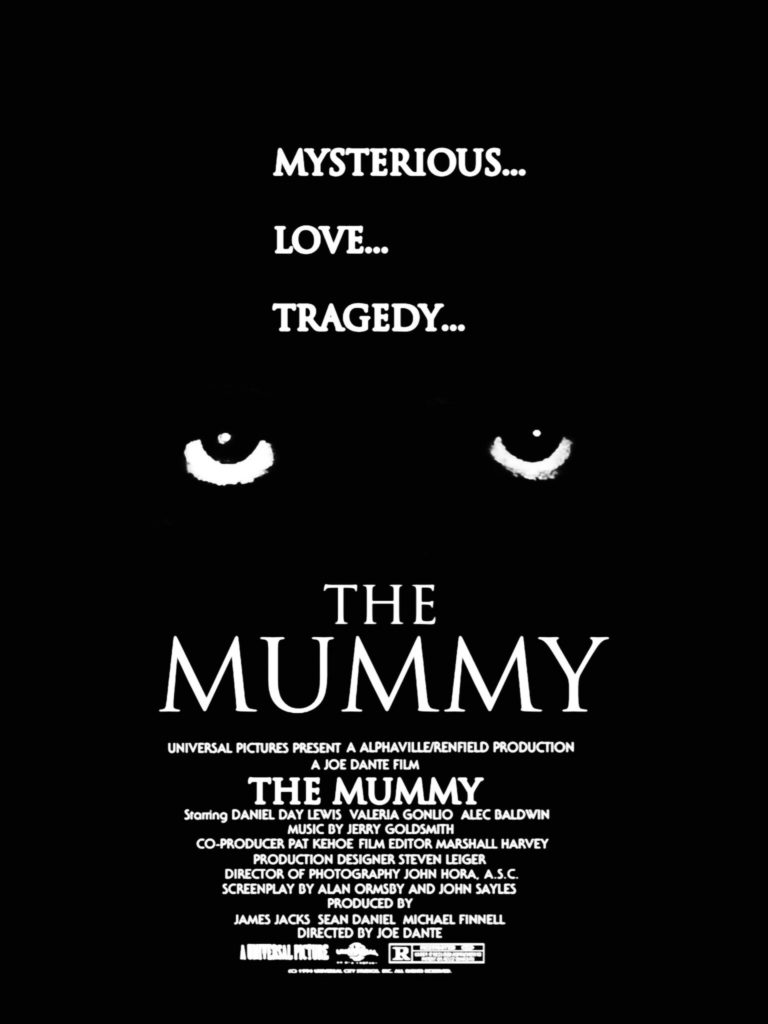
Next, Joe Dante (director of Gremlins) suggested The Mummy take the form of a contemporary love story, downsizing the horror and casting Daniel Day-Lewis as a brooding mummy searching for his lost love.
When he, too, left the project, Jacks and Daniel brought on George A. Romero (creator of Night of the Living Dead) whose modern-set romance/thriller film would’ve been dark and violent featuring a female archaeologist who unknowingly falls in love with the revived mummy. Universal passed.
Ultimately, the project couldn’t move forward without a director and a vision… and both finally arrived thanks to Stephen Sommers, best known for his live-action adaptation of The Jungle Book. Sommers had an idea that diverged from all the concepts that had come before… rather than a modern-set horror romance, he suggested that The Mummy be imagined as a swashbuckling action-adventure film set in the 1920s – “as a kind of Indiana Jones or Jason and the Argonauts with the mummy as the creature giving the hero a hard time.”
Executives were so enamored with the concept of having their own Indiana Jones-style franchise utilizing their movie monster, they green-lit the film with Sommers attached as a director and upped the budget from $10 million to $80 million.
It paid off in spades.
The Mummy (1999)

On May 7, 1999, The Mummy opened in theaters.
It would be a stretch to call Sommers’ film a “remake” of the 1932 original, except in the sense that it cleverly breathed new life into an old intellectual property and re-used some names and plot points throughout. But The Mummy was all-new and, true to Sommers’ promise, was poised to be Universal’s own Indiana Jones.
The film – set in 1926 – follows adventurer and treasure hunter Rick O’Connell (played by Brendan Fraser) and posh, independent librarian Evie Carnahan (Rachel Weisz) who unwittingly revive the rotting remains of disgraced high priest Imhotep with the long-lost Book of the Dead. As Imhotep seeks out and devours the crew that opened his chest one-by-one, he regains his human form (played by Arnold Vosloo), seeking to reanimate his forbidden love, Anck-su-Namun, as the ten plagues of Egypt rein down.
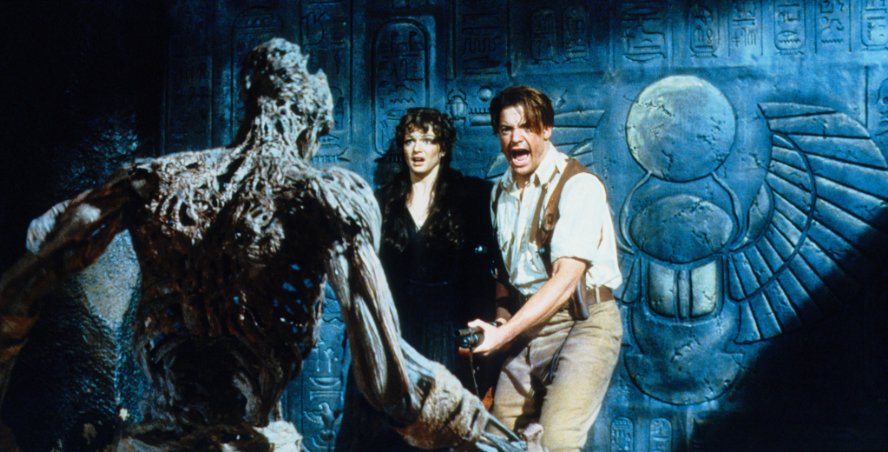
Alright, so the globetrotting adventure might not have won any Academy Awards… but the mile-a-minute fun of the film did make it a summer blockbuster, and it handily earned $416 million against its $80 million budget.
And you know what that means.
The day The Mummy was released, The Mummy Returns was green-lit. Two years to the week later, the sequel (arguably even more fun, absurd, and adventurous than the first in its way) earned $433 million more. Not to mention, The Mummy Returns jumpstarted a Saturday morning cartoon that aired on Kids WB (The Mummy: The Animated Series), a third film (the universally panned Tomb of the Dragon Emperor, which earned $400 million, too), and a spin-off film series, The Scorpion King (with four entries of its own) that made Dwayne “The Rock” Johnson into a household name.
This much was clear: even by the dawn of the New Millennium, Universal had found their new hit – a true Indy-sized franchise ripe for the picking. Next, they just needed to find a way to leverage it in their theme parks…
From Downtown to Tomb
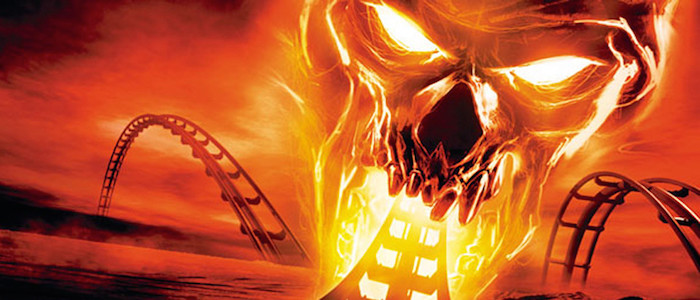
When the 2001 opening of The Mummy Returns brought the box office gross for the series near to a billion dollars, it assured that The Mummy would be the first foray into updating Universal Studios Florida. The question is… where would it go?
Bolstered by the promise of rejuvenating their Studios, Universal looked out across its slate of opening day dark rides and saw the perfect place: the massive, gargantuan soundstage (one of the largest showbuildings ever developed for a theme park) on the streets of New York, concealed behind the white marble exterior of Penn Station….
Kongfrontation closed forever on September 8, 2002 – the first of Universal Studios Florida’s opening-day masterpieces to fall to progress.
At once, the six-story showbuilding became a construction site as the streets of New York fell. In dismantling one of the most elaborate attractions in Orlando, Universal opened up an unprecedented blank canvas with 62,000 feet of cavernous soundstage interior to work with. (They also, by necessity, left large swaths of Kongfrontation’s track bolted to the ceiling, given that the former ride was quite literally built into the soundstage’s structure.)
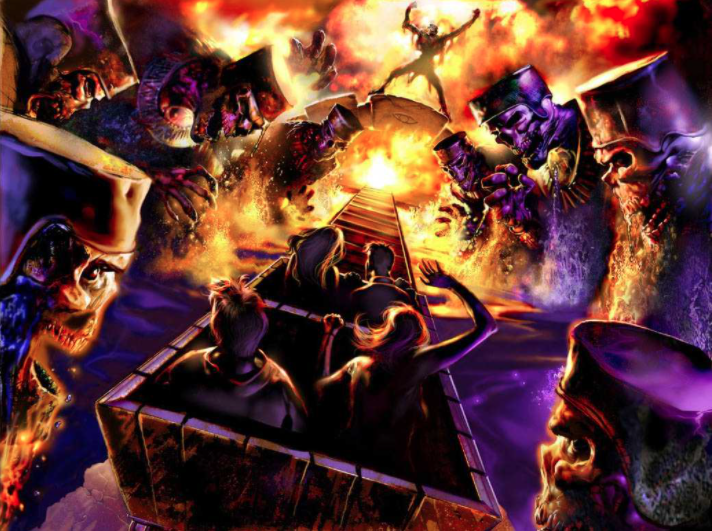
Working closely with film director Stephen Sommers, Universal devised a plan for what they deemed “the world’s first psychological thrill ride.” An ambitious promise, they were mostly right – Revenge of the Mummy is a roller coaster that cleverly disguises itself as a dark ride, with vignettes designed to antagonize… from beetles (entomophobia) and spiders (arachnophobia) to corpses (necrophobia) and darkness (lygophobia), the ride is perhaps best understood as a haunted house thrill ride teasing out one particular “phobia:” fear of the unknown.
Premier Rides of Maryland was brought in to manufacture the roller coaster itself, utilizing their industry-shaping LIM (linear induction motor) technology – one of our Seven Modern Wonders of the Theme Park World.
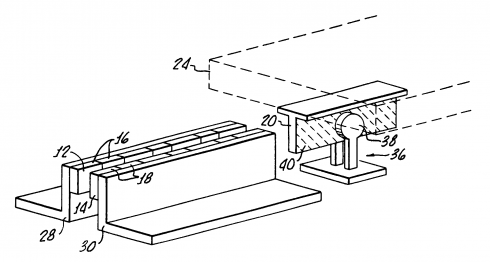
The LIM system – first used in 1996 on Premier’s Flight of Fear roller coasters at Kings Island and Kings Dominion – uses electromagnetic fields to propel roller coaster trains. It’s simpler than it seems. On an LIM coaster, linear induction motors are bolted to the roller coaster’s track, while each train is affixed with metallic fins that pass through a groove in the motor. When supplied with electricity, the LIM becomes an electromagnet, attracting-in and then repelling-out the train’s fin. When LIMs are lined up down a coaster’s track and powered in succession, they can create gradual and quick acceleration (a launch) using magnetism: a non-contact force!
On Revenge of the Mummy, LIMs would be ingeniously placed at intervals along the coaster’s “dark ride” section, giving gradual, continuous miniature “boosts” to keep the cart moving like a traditional dark ride. Then, at key points during the ride, grouped LIMs would gradually and rapidly accelerate the train to the ride’s top speed.
Dynamic Attractions was also brought in to construct some tricky track sections that would turn, rotate, and realign the vehicles to do things riders simply wouldn’t be expecting.
Combined with that fear of the unknown, the unassuming statistics behind the coaster (which, on paper, reads as a clear family roller coaster with a height barely topping 40-feet and a 40 mile-per-hour top speed) into a three-minute thrill ride that’s as fun, energized, and electric as the films. And for $40 million, we would sure hope so.
Ready to face the Revenge of the Mummy? We’ll take a journey into Imhotep’s tomb on the next page! Read on…




